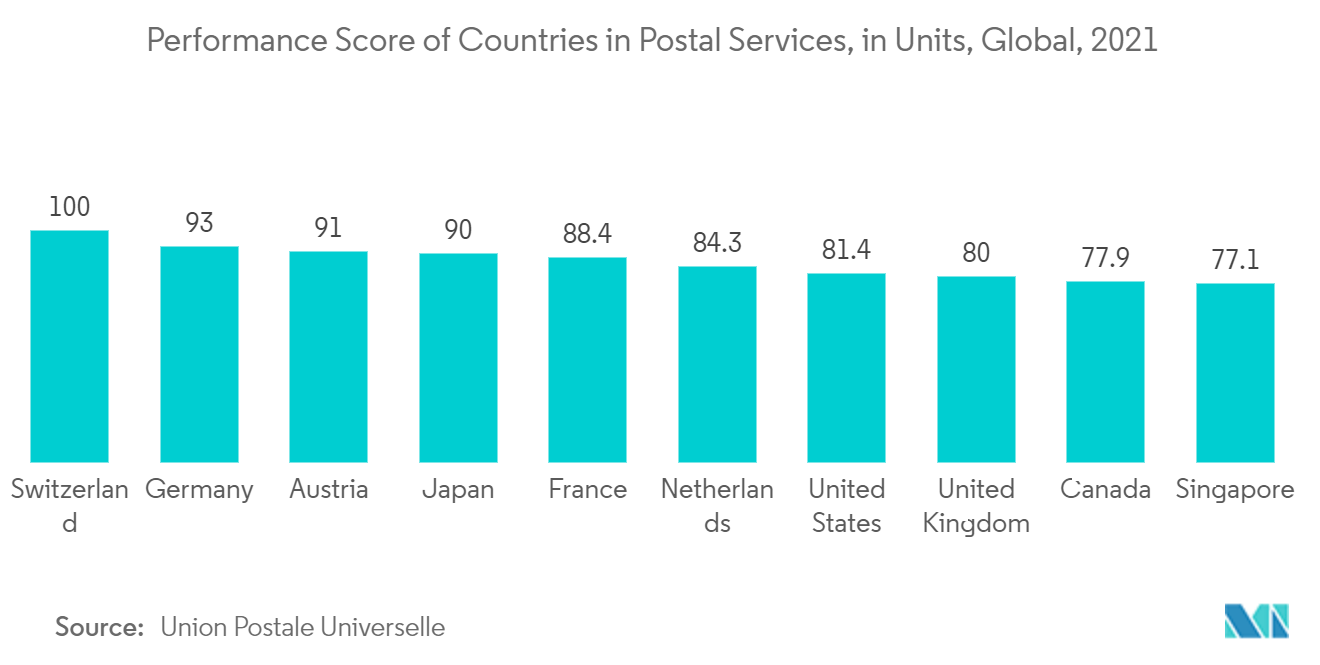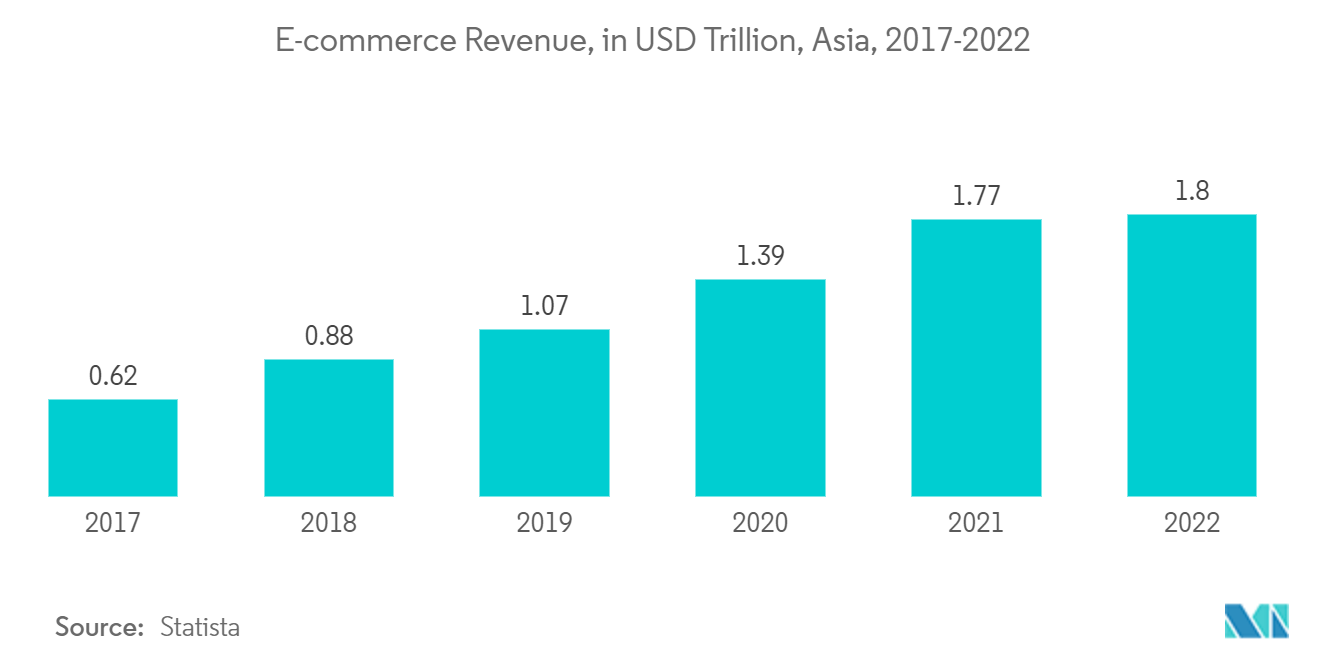Market Trends of Asia-Pacific Postal Services Industry
This section covers the major market trends shaping the APAC Postal Services Market according to our research experts:
Liberalization Affecting the Market Share of Designated Operators
In the Asia-Pacific region, the postal service is generally not included in national development plans, and there is a lack of postal sector policies to define the universal postal service, formulate development plans, set modern legal/regulatory frameworks, and finance the modernization of services. The decades-long trend of the liberalization of postal markets has resulted in increased competition among postal operators in the traditional segments of letter post, parcel post, and express mail in the Asia-Pacific region. As reported by Universal Postal Union in March 2022, in the letter-post segment, the competition was somewhat stronger in the Asia-Pacific region in comparison to the global norm, as the designated operators (DOs) market share stood at 79.4% in the region. In the parcel-post segment, the average market share held by DOs in the region was 26.3%, indicating a high level of competition, while the market share for express delivery of goods and documents stood at 42.5%.
Of the 36 member countries in the Asia-Pacific region, the postal services of one-third are still managed by government departments. The post in these countries plays a more important role than that in those where the postal service has been corporatized. To help their governments and the population combat the COVID-19 pandemic, DOs of both types launched new and/or value-added postal services. In countries where postal services are commercialized, DOs still make great efforts to undertake their social responsibilities. Australia Post introduced a home delivery service for medication and medical supplies to help protect vulnerable members of the community. Pharmacies can claim back postal costs from the government. However, as most regulators in the region do not provide frequent reports on the performance of the DO and other postal operators, nor do they conduct postal market research, there is a much-needed transformation in demand in the sector to focus on customer needs and take advantage of new business opportunities such as e-commerce and electronic and financial services.

E-commerce has Created Opportunities for Postal Services
E-commerce represents a tremendous opportunity for postal services as consumers become increasingly comfortable ordering items online from emerging e-commerce platforms, and traditional brick-and-mortar outlets are also transitioning to digital environments. Post offices can play a critical role in bridging one of the crucial barriers faced by start-ups and MSMEs, that is, the absence of a free online platform and efficient and affordable courier service provider to enter into online trading. As the volume of online sales increases, e-commerce providers are seeking cost-effective channels for the delivery and collection of purchased items. Postal services, with their long-established national networks and experience in last-mile delivery, are emerging as effective partners in this regard.
In Malaysia, for example; Pos Malaysia Berhad, the national postal and courier service provider is now going all-in on AWS to drive the company's ambitious transformation plan to diversify its products and services. As part of this business transformation, Pos Malaysia is closing its on-premises data centers and migrating the vast majority of its information technology (IT) infrastructure to the world's leading cloud by 2023. However, many global postal services organizations are not equipped to take advantage of this growth in e-commerce. While B2C eCommerce is growing at a global rate of 17%, parcel volumes among postal services organizations have been growing at less than 5%. Part of the issue is the low adoption of digital technologies as core business and innovation drivers among low-performing postal services organizations.


